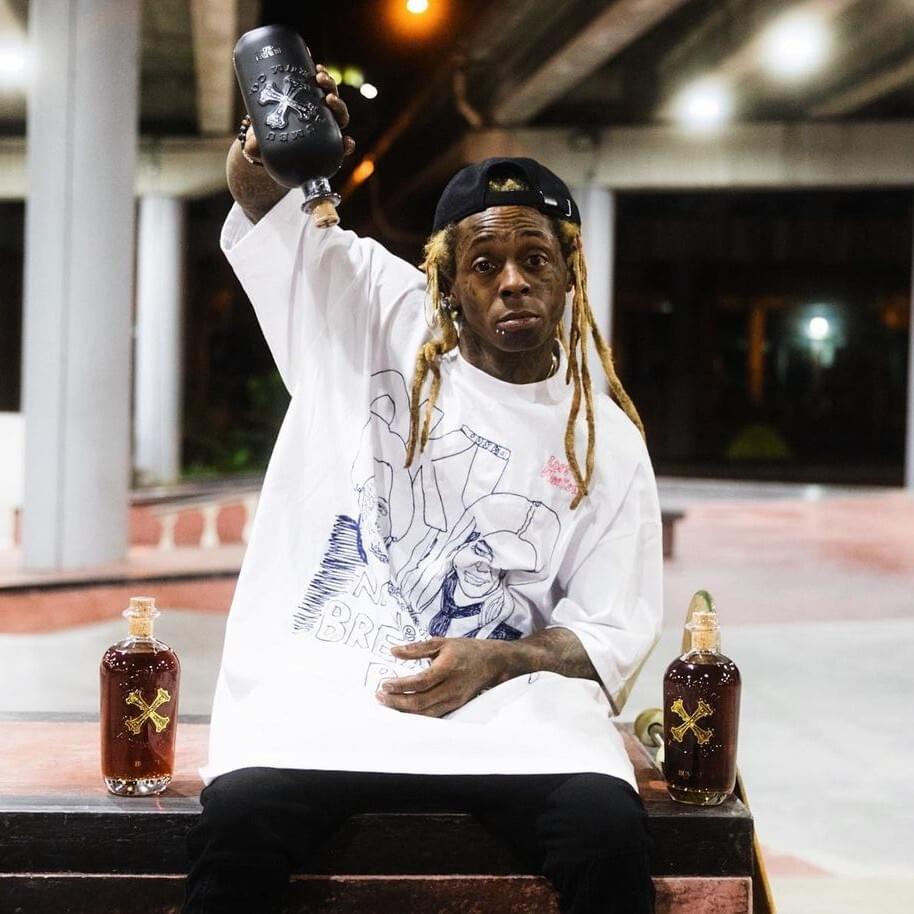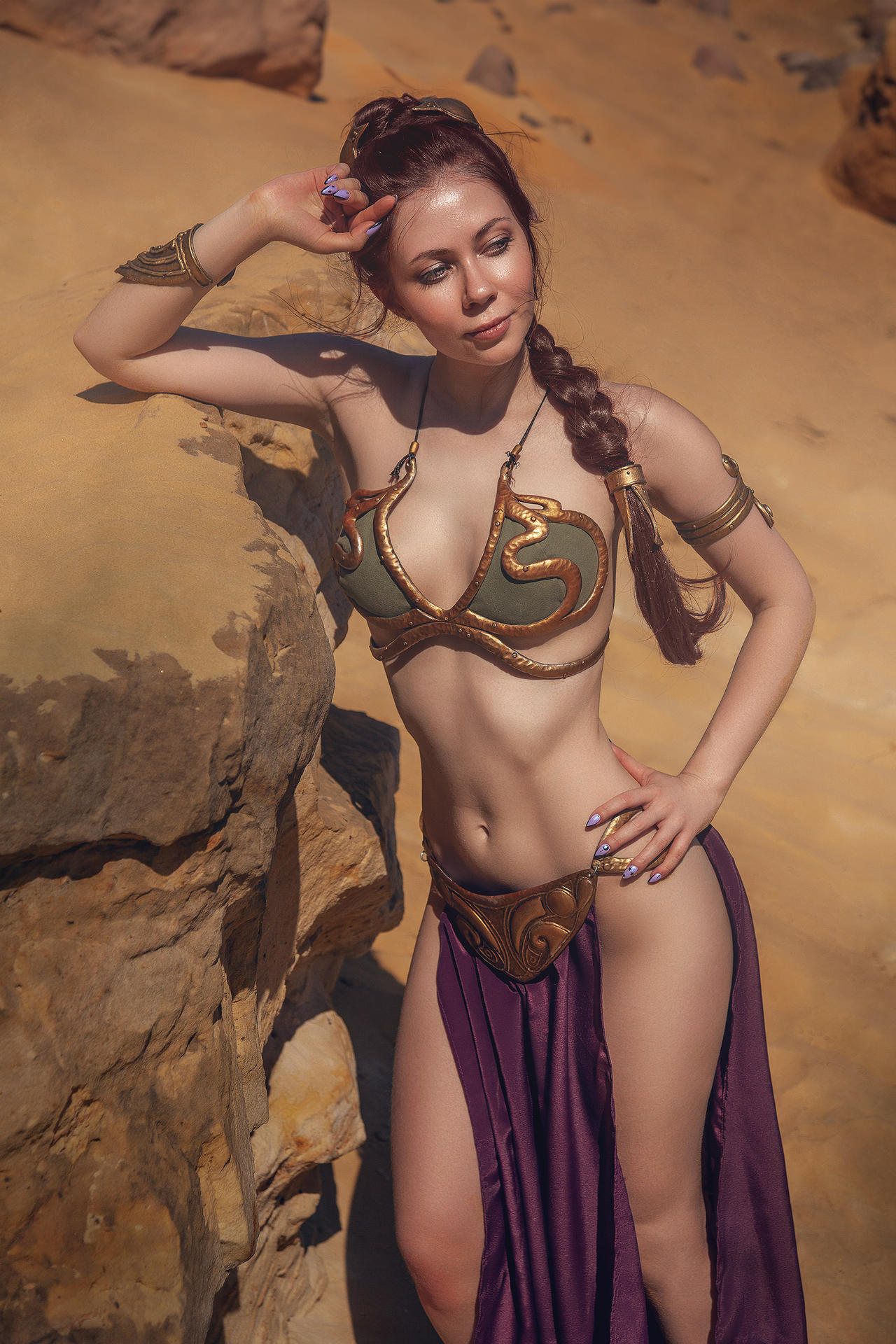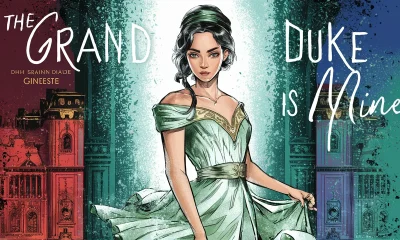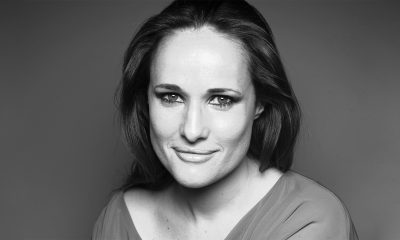Entertainment
Title: Why Bridgerton is the Perfectly Soapy Escape
Published
4 months agoon
By
Harry
The Netflix series Bridgerton has taken the world by storm, combining lush historical settings with romance, drama, and intrigue in a style that can only be described as “soapy.” Created by Chris Van Dusen and produced by Shonda Rhimes, Bridgerton brings Julia Quinn’s novels to life with high society drama, scandalous liaisons, and larger-than-life characters. Since its release, the series has drawn viewers in with its heady mix of romance, opulence, and scandal, leading many to ask: why is Bridgerton so deliciously “soapy”?
This article will explore what makes Bridgerton such a quintessential example of soapy drama, how it balances romance and scandal, and why viewers can’t get enough. We’ll also look at the show’s unique take on regency-era storytelling and how its modern elements contribute to its irresistible charm.

1. What Defines “Soapy” Drama?
In television, a “soap opera” refers to a serialized drama, often filled with exaggerated storylines, interpersonal conflicts, and emotional highs and lows. Traditionally associated with daytime TV, soap operas became known for their formulaic yet addictive plotlines, usually centered around romantic entanglements, family drama, and recurring themes of betrayal and secrecy. While Bridgerton is not a soap opera in the traditional sense, it embraces many of the classic elements that make soap operas so engaging.
A “soapy” show captures the essence of a soap opera but usually comes with higher production values and a more polished storytelling style. This includes extravagant settings, heightened drama, and dramatic cliffhangers. With its grand visuals, glamorous costumes, and richly layered character arcs, Bridgerton has managed to inject all these classic soap elements into a high-budget, period setting—making it an irresistibly soapy spectacle.
2. The Appeal of Drama and Scandal
One of the most defining aspects of Bridgerton is its unapologetic embrace of scandal. From the very first episode, the show sets the tone with Lady Whistledown, the mysterious writer of a society gossip column that mercilessly unveils the secrets of London’s elite. The omniscient voice of Lady Whistledown, played with delightful wit by Julie Andrews, adds an air of mystery and constant intrigue. Her presence amplifies the scandals, misunderstandings, and betrayals that are at the heart of the show’s plot.
These elements of scandal make Bridgerton feel fresh and unpredictable. Forbidden relationships, broken engagements, and public shaming are just a few of the twists that keep the audience engaged. By inviting viewers to witness the secret lives of its characters, Bridgerton draws them into a web of intrigue that keeps them coming back for more.
3. Romance: A Core Ingredient of Soapy Goodness
At the core of Bridgerton is romance, and the show’s primary storyline often revolves around a single central love story per season. Season 1 focuses on Daphne Bridgerton and the dashing Duke of Hastings, Simon Basset, whose slow-burn romance and subsequent steamy scenes left viewers swooning. Season 2 shifts focus to Anthony Bridgerton’s love triangle with the strong-willed Sharma sisters, capturing the audience’s hearts with themes of yearning, jealousy, and redemption.
Bridgerton takes the “will-they-won’t-they” trope to new heights by setting romantic tension against the social pressures of Regency-era London. The series uses the strict norms and expectations of that time to amplify the stakes. In this world, a single misstep could lead to public disgrace or ruin a family’s reputation, adding another layer of tension to each romance. The show’s ability to build up these forbidden romances and forbidden kisses, creating tantalizingly slow builds, is what makes it so enjoyable for fans of romance and drama alike.
4. Exquisite Costumes and Settings: Visual Opulence
No discussion of Bridgerton would be complete without mentioning its lavish production design. The costumes, in particular, are a huge part of what makes the series feel so soapy. Bridgerton takes creative liberties with Regency-era fashion, infusing period-accurate attire with a bright, sometimes whimsical color palette. Costume designer Ellen Mirojnick has noted that the goal was to make the costumes feel accessible to a modern audience while remaining inspired by the era.
Each family in Bridgerton has its own distinct style—the Bridgertons are known for soft blues and pastels, while the Featheringtons wear bolder colors like yellows and pinks. This visual storytelling enhances the drama, with each character’s wardrobe offering subtle hints about their personality and emotional state. These lavish costumes, combined with carefully chosen settings and lush landscapes, add to the “soapiness” by creating a rich, immersive atmosphere.
5. A Modern Twist on Regency-Era Drama
Bridgerton goes beyond its traditional Regency-era setting by incorporating modern elements that make the show relatable to contemporary audiences. First, it uses modern music reimagined as orchestral covers, including renditions of songs by Ariana Grande, Taylor Swift, and Billie Eilish. This soundtrack serves as a bridge between the historical and the modern, making the story accessible to a broader audience and adding a playful, fresh edge to the period drama.
The casting also takes a progressive approach, embracing diversity in a way that other period dramas often overlook. Characters of various backgrounds are seamlessly woven into the aristocratic society, creating a reimagined version of history that appeals to modern sensibilities. This choice not only contributes to the show’s inclusivity but also allows it to address themes of race, identity, and power dynamics in ways that feel relevant today.
6. Complex Characters and Relationships
Each character in Bridgerton is given a distinct personality and complex motivations, contributing to the rich, layered storytelling. While each season focuses on one primary romance, secondary characters are also given depth and compelling arcs, which enhances the show’s dramatic appeal. The Bridgerton siblings, for example, all have their own struggles with love, duty, and ambition.
Bridgerton also explores various types of relationships, from the passionate romances to the platonic friendships, sibling rivalries, and parental expectations. By developing multiple relationships, the series maintains a balance between emotional resonance and high-stakes drama, enhancing its soapy allure.
Conclusion
Bridgerton has proven itself to be the ultimate soapy escape, offering viewers the perfect blend of romance, scandal, and drama set against a backdrop of historical opulence. It takes the best elements of traditional soap opera storytelling and elevates them with high production values, nuanced characters, and a modern twist. By focusing on love stories that transcend time and incorporating contemporary themes, the series has redefined the period drama genre for a new generation.
Through its romance and intrigue, Bridgerton provides an immersive experience that allows viewers to escape into a world of glamour, passion, and secrets. With each season unveiling a new love story and fresh scandals, fans are left eagerly anticipating what’s next for the Bridgerton family. Ultimately, Bridgerton is more than a show—it’s an invitation to revel in a richly crafted world where emotions run high and every glance or whispered word has the power to ignite passion and set the stage for yet another deliciously dramatic season.
FAQs
1. Why is Bridgerton considered “soapy”?
Bridgerton is “soapy” because it incorporates many elements of classic soap opera storytelling, such as high drama, scandal, romance, and interpersonal conflicts. These exaggerated, yet highly engaging storylines keep viewers hooked.
2. How accurate is Bridgerton to Regency-era England?
While Bridgerton is inspired by the Regency period, it takes creative liberties in its portrayal of society, fashion, and diversity. The show combines historical elements with modern twists, including contemporary music and diverse casting.
3. Who is Lady Whistledown, and why is she important?
Lady Whistledown is the pseudonymous author of a gossip column that reveals the secrets of high society. Her commentary adds intrigue and scandal, making her a pivotal character in driving the show’s drama.
4. Why does Bridgerton use modern music in a historical setting?
The use of modern music reimagined as orchestral pieces serves to connect the audience to the story in a unique way. It brings a fresh perspective to the period drama and enhances the emotional resonance of key scenes.
5. Will there be more seasons of Bridgerton?
Yes, Netflix has renewed Bridgerton for several more seasons, with each season set to follow a different Bridgerton sibling’s romantic journey, keeping viewers eagerly anticipating more drama, romance, and scandal.
6. How does Bridgerton balance historical elements with modern themes?
Bridgerton maintains historical elements, like the setting and fashion, but incorporates modern ideas through diverse casting and addressing issues such as race and social class, making it relatable for contemporary viewers.
7. What can we expect in future Bridgerton seasons?
Each season of Bridgerton is based on a novel from Julia Quinn’s series, so fans can expect to follow more Bridgerton siblings as they navigate love, heartbreak, and societal pressures in London’s high society.
You may like
Entertainment
JonStewart: A Closer Look at His Height and Its Impact
Published
3 months agoon
November 25, 2024By
Harry
Jon Stewart, a celebrated comedian, television host, and social commentator, is best known for his incisive wit and sharp political satire. While his career achievements often take center stage, his height has been a point of curiosity for many fans and observers. In this article, we will explore Jon Stewart’s height in detail, analyze its relevance, and discuss how physical stature intersects with his public persona and professional success.
How Tall Is Jon Stewart?
Jon Stewart’s height is officially listed as 5 feet 7 inches (170 cm). While this places him below the average height for adult males in the United States (around 5 feet 9 inches), Stewart’s stature has never defined his career or overshadowed his accomplishments. Despite the societal emphasis on height, particularly for men, Stewart’s presence and charisma have always taken center stage, proving that talent and personality transcend physical attributes.
The Significance of Height in the Entertainment Industry
Height has long played a notable role in the entertainment world, often influencing how individuals are perceived both on and off-screen. Tall actors and public figures are frequently associated with authority and dominance, while shorter individuals might face stereotypes that attempt to diminish their presence.
However, Jon Stewart’s career stands as a testament to the idea that talent, intelligence, and humor can eclipse physical stature. In a profession where visuals matter, Stewart’s ability to connect with audiences, deliver biting commentary, and earn widespread respect demonstrates that height is far from a defining factor.
The Role of Personality in Defying Stereotypes
Jon Stewart’s on-screen persona is larger than life. Through his tenure as the host of The Daily Show from 1999 to 2015, he became one of the most influential voices in American media. His quick wit, intellectual depth, and ability to tackle complex topics with humor made him a trusted figure in political satire.
Stewart’s physical height might be unremarkable by societal standards, but his personality, confidence, and charisma have made him an iconic figure. His work illustrates how an individual’s qualities can outshine superficial traits, challenging societal norms about appearance.
Public Perception and Commentary
Over the years, Jon Stewart’s height has occasionally been a topic of lighthearted discussion in media and among fans. Comedians and commentators have sometimes poked fun at his stature, but these remarks are generally made in good humor and do not detract from his reputation.
Stewart himself has shown a willingness to laugh at his own expense, often using humor as a tool to address and defuse any potential criticism. This self-awareness and confidence further endear him to his audience, reinforcing the idea that stature—whether physical or metaphorical—is about far more than inches.
Comparisons to Other Celebrities
Jon Stewart’s height places him in good company among many successful celebrities who are of similar stature. For instance:
- Tom Cruise (5’7”): A global superstar known for his action-packed roles and leading-man status.
- Robert Downey Jr. (5‘7”): The charismatic actor behind Iron Man in the Marvel Cinematic Universe.
- Kevin Hart (5’4”): A comedic powerhouse who has turned his height into a source of humor and relatability.
These examples demonstrate that success in Hollywood and the entertainment industry is not contingent on towering height. Instead, qualities like talent, determination, and adaptability are far more critical.
The Psychology of Height and Perception
Height often carries symbolic weight in human psychology, influencing how individuals are perceived in terms of authority, leadership, and attractiveness. However, these perceptions are not universal and can be easily overridden by other attributes.
In Jon Stewart’s case, his intelligence, humor, and authenticity have allowed him to rise above any potential biases. Studies on charisma and leadership suggest that traits such as emotional intelligence, confidence, and communication skills are far more influential than physical height in determining success and influence.
Stewart’s Legacy: A Case Study in Breaking Barriers
Jon Stewart’s career offers valuable lessons about challenging stereotypes and redefining success. His work as a comedian, host, and advocate has left an indelible mark on the media landscape. Whether interviewing political figures, critiquing societal issues, or addressing his audience directly, Stewart has consistently demonstrated that substance outweighs superficiality.
His advocacy work—particularly his efforts to secure healthcare for 9/11 first responders—further underscores his commitment to meaningful change. These actions resonate far more than any discussion about his height ever could.
Conclusion
Jon Stewart’s height of 5 feet 7 inches is but a footnote in a career defined by groundbreaking achievements and enduring influence. His story is a powerful reminder that personal attributes like intelligence, humor, and empathy hold far greater importance than physical stature. By embracing his identity and defying societal expectations, Stewart has shown that true greatness comes from within.
As fans and observers, we are reminded to look beyond the surface and celebrate individuals for their contributions, character, and impact on the world. Jon Stewart stands tall in every sense that truly matters.
FAQs About Jon Stewart’s Height
Q: How tall is Jon Stewart?
A: Jon Stewart is 5 feet 7 inches (170 cm) tall.
Q: Is Jon Stewart shorter than the average male?
A: Yes, the average height for adult males in the United States is approximately 5 feet 9 inches (175 cm), making Stewart slightly shorter than average.
Q: Has Jon Stewart ever addressed his height publicly?
A: While Jon Stewart has not made his height a major topic of discussion, he has occasionally used humor to address or deflect attention from it.
Q: Are there other successful celebrities of similar height?
A: Yes, many successful celebrities, including Tom Cruise (5’7”), Robert Downey Jr. (5‘7”), and Kevin Hart (5’4”), have achieved tremendous success despite being shorter than the average male.
Q: Why is Jon Stewart’s height a topic of interest?
A: As a public figure, every aspect of Jon Stewart’s life, including his height, is of interest to fans and media. However, his stature does not define his accomplishments or legacy.
Q: What can we learn from Jon Stewart’s perspective on height?
A: Jon Stewart’s career demonstrates that qualities like intelligence, humor, and authenticity far outweigh physical attributes like height in determining success and influence.
Entertainment
Renaissance Art Rappers: Bridging Eras Through Creativity
Published
3 months agoon
November 25, 2024By
Harry
The Renaissance, a period of cultural rebirth in Europe spanning roughly the 14th to 17th centuries, was marked by extraordinary advancements in art, science, and thought. Iconic figures like Leonardo da Vinci, Michelangelo, and Raphael shaped the art world with their mastery of technique and their ability to convey profound human emotions. In modern times, a unique movement has emerged that draws inspiration from this historic era: Renaissance art rappers. These artists seamlessly blend the intricacies of Renaissance aesthetics with the rhythm, poetry, and energy of contemporary hip-hop.is fusion not only highlights the versatility of hip-hop as a genre but also underscores the timeless relevance of Renaissance art. By exploring how these two worlds intersect, we uncover a cultural bridge that connects the innovation of the past with the creativity of the present.
The Genesis of Renaissance Art Rap
The concept of merging Renaissance art with rap might seem unconventional, yet it finds its roots in the inherent parallels between the two. Both serve as mediums for self-expression and societal commentary, often challenging the norms of their times. While Renaissance art was a reaction to the rigid structures of the Middle Ages, hip-hop emerged as a voice for marginalized communities in the 20th century.
Artists like Kanye West, Lupe Fiasco, and Kendrick Lamar have occasionally drawn on classical art and themes in their work. Kanye’s My Beautiful Dark Twisted Fantasy album cover, for example, features painterly aesthetics reminiscent of Renaissance art. Similarly, Kendrick Lamar’s To Pimp a Butterfly intertwines complex narratives with imagery evocative of grand historical tableaux.
However, a distinct subculture of Renaissance art rappers has taken this concept further. These artists don’t merely reference classical aesthetics; they immerse their music, visuals, and lyrics in the ethos of the Renaissance.
Characteristics of Renaissance Art Rappers
Renaissance art rappers are defined by their ability to integrate classical motifs into their modern craft. Here are some key elements that characterize their work:
1. Lyricism Inspired by Renaissance Literature
Renaissance art rappers often incorporate themes from literature and philosophy of the era. References to Dante’s Divine Comedy, Machiavelli’s The Prince, and Shakespeare’s plays are common. Their lyrics echo the intellectual curiosity and depth that defined the Renaissance.
2. Visual Aesthetics
The music videos and album art of these artists frequently draw from Renaissance masterpieces. For instance, they may reinterpret Michelangelo’s The Creation of Adam or Botticelli’s The Birth of Venus with modern settings, emphasizing the universality of these works.
3. Fusion of Classical and Modern Sounds
Renaissance art rappers experiment with orchestral arrangements, harpsichords, and other instruments from the period, blending them with contemporary beats and bass lines. This unique soundscape creates a musical experience that feels both ancient and futuristic.
4. Social and Political Commentary
Just as Renaissance art often grappled with humanism and the shifting dynamics of power, Renaissance art rappers use their platform to address modern societal issues. Their work reflects a synthesis of historical awareness and contemporary critique.
Prominent Figures in the Movement
While the movement is still niche, several artists have made significant contributions:
1. Akala
A British rapper, poet, and activist, Akala frequently incorporates themes from history and literature into his work. His lyrical depth and intellectual approach make him a standout figure in this space.
2. Rapsody
Rapsody’s intricate storytelling and ability to weave historical references into her music align her with the ideals of Renaissance art rap. Her album Eve celebrates influential women throughout history, blending past and present.
3. J. Cole
Known for his introspective lyrics, J. Cole occasionally draws on classical imagery and themes. His work exemplifies the thoughtful integration of Renaissance principles into hip-hop.
4. Kanye West
Though more mainstream, Kanye’s contributions to the aesthetic fusion of art and music cannot be overlooked. His bold visual concepts and thematic explorations often hint at Renaissance influences.
Renaissance Art Rap and Cultural Impact
Reinvigorating Interest in Classical Art
By incorporating Renaissance motifs, these artists have introduced a younger audience to classical art and history. Music videos and album covers serve as visual gateways, encouraging fans to explore the original masterpieces.
Challenging Artistic Boundaries
The movement challenges the notion that hip-hop is limited to certain themes or aesthetics. By blending high art with street culture, Renaissance art rappers demonstrate the genre’s adaptability and intellectual depth.
Encouraging Cross-Disciplinary Collaboration
The integration of Renaissance art into hip-hop has sparked collaborations across disciplines. Visual artists, filmmakers, and musicians work together to create immersive experiences that resonate on multiple levels.
Criticisms and Challenges
While the movement has garnered praise, it is not without its critics. Some argue that the blending of Renaissance art and rap risks diluting the essence of both. Others question whether the movement’s intellectual bent alienates traditional hip-hop audiences.
Additionally, Renaissance art rap faces challenges in achieving mainstream recognition. Its niche appeal and heavy reliance on historical references may not resonate with all listeners. However, these very traits are also its greatest strengths, offering a unique alternative to mainstream trends.
The Future of Renaissance Art Rap
As technology continues to evolve, the possibilities for blending art forms become increasingly limitless. Virtual reality, AI-generated art, and interactive media could further enhance the Renaissance art rap experience. Imagine a concert where audiences are immersed in a digital recreation of the Sistine Chapel while listening to rap verses inspired by Michelangelo’s work.
The movement’s future also depends on its ability to balance accessibility with intellectual rigor. By finding innovative ways to connect with diverse audiences, Renaissance art rappers can ensure their work remains both relevant and impactful.
Conclusion
Renaissance art rappers embody the spirit of innovation that defined the Renaissance itself. By fusing classical motifs with contemporary hip-hop, they create art that transcends time and genre. This movement not only celebrates the enduring legacy of the Renaissance but also underscores the boundless potential of hip-hop as a cultural force.
As the worlds of art and music continue to evolve, Renaissance art rap serves as a testament to the power of creativity and the enduring dialogue between past and present.
FAQs
1. What is Renaissance art rap?
Renaissance art rap is a subgenre of hip-hop that incorporates themes, imagery, and aesthetics from the Renaissance period into its music, visuals, and lyrics.
2. Who are some notable Renaissance art rappers?
Prominent figures include Akala, Rapsody, J. Cole, and Kanye West, all of whom have explored themes and visuals inspired by classical art and history.
3. How does Renaissance art rap differ from traditional hip-hop?
While traditional hip-hop often focuses on contemporary themes, Renaissance art rap integrates historical references and classical motifs, offering a unique blend of the past and present.
4. What impact has Renaissance art rap had on culture?
The movement has reinvigorated interest in classical art, challenged artistic boundaries, and encouraged cross-disciplinary collaboration between musicians, visual artists, and historians.
5. What challenges does the movement face?
Renaissance art rap faces challenges in achieving mainstream recognition due to its niche appeal and intellectual focus. However, these qualities also distinguish it as a unique artistic movement.
6. What is the future of Renaissance art rap?
The future of Renaissance art rap lies in embracing new technologies like virtual reality and AI while maintaining a balance between accessibility and intellectual depth.
Entertainment
The Iconic Legacy of of Princess Leia’s Bikini in Star Wars
Published
3 months agoon
November 19, 2024By
Harry
The “Princess Leia bikini,” officially known as Leia’s Hutt Slayer costume, is one of the most memorable and controversial outfits in the Star Wars franchise. Debuting in Star Wars: Episode VI – Return of the Jedi (1983), this golden metal bikini worn by Carrie Fisher as Princess Leia while enslaved by Jabba the Hutt has become a pop culture phenomenon. Simultaneously celebrated for its aesthetic and criticized for its implications, the costume holds a complex place in cinematic history.
The Origins of the Costume
Leia’s gold bikini first appeared in Return of the Jedi, where her character is captured and enslaved by Jabba the Hutt, a grotesque crime lord. Costume designer Aggie Guerard Rodgers collaborated with sculptor Richard Miller to create the look. Crafted to reflect Jabba’s decadence and Leia’s resilience, the bikini combined metal-like materials with flexible leather and fabric to allow for movement while evoking an ancient slave aesthetic.
The decision to put Leia in this outfit was partly to contrast her previous, more conservative looks and showcase her vulnerability and strength under duress. It also reflected the influence of 1980s aesthetics, where bold and provocative fashion was a cinematic trend.
Carrie Fisher’s Experience with the Costume
Carrie Fisher’s reflections on wearing the bikini were both humorous and critical. In interviews, she remarked on the discomfort of the outfit, which required careful positioning to avoid wardrobe malfunctions. Fisher also highlighted how the revealing costume symbolized the male gaze in Hollywood, often delivering wry commentary about her role in what she jokingly referred to as “intergalactic porn.”
At the same time, Fisher embraced the empowering aspect of Leia’s story arc. The scene in which Leia strangles Jabba the Hutt with her chains has become a defining moment for her character, symbolizing resistance and reclaiming agency.
Cultural Impact and Popularity
1. A Symbol of Sci-Fi Glamour
The Princess Leia bikini became an instant icon, frequently replicated in cosplay, fan art, and media homages. Its striking design and connection to one of cinema’s most beloved franchises ensured its place in popular culture.
2. Feminist and Critical Interpretations
While some view the costume as objectifying, others argue that Leia’s eventual triumph over Jabba redefines the narrative. Feminist readings highlight Leia’s ability to turn a moment of vulnerability into one of empowerment.
3. A Staple of Fan Culture
From comic conventions to Halloween parties, the gold bikini remains one of the most recognizable costumes. It has inspired countless re-creations and parodies, cementing its status as a staple of geek culture.
The Controversies Surrounding the Bikini
1. Objectification in Cinema
Critics of the costume often cite it as an example of unnecessary sexualization in film. Leia, who had previously been depicted as a strong, independent leader, was placed in a context that seemingly prioritized her appearance over her character development.
2. Modern Reappraisals
As societal attitudes toward gender representation in media have evolved, the bikini has been reexamined. Some fans and critics have questioned whether such a revealing costume would be included in a contemporary Star Wars production.
3. Carrie Fisher’s Advocacy
In her later years, Fisher used her platform to discuss Hollywood’s treatment of women and the unrealistic standards it imposed. Her candid remarks about the bikini often served as a springboard for broader conversations about gender dynamics in the industry.
The Legacy of the Leia Bikini
Decades after its debut, the Leia bikini continues to spark debate about representation, power, and fan culture. It occupies a unique place in the Star Wars saga as both a symbol of the franchise’s historical context and a conversation starter about the evolution of female characters in media.
From a design perspective, the bikini is celebrated for its craftsmanship and aesthetic. From a narrative standpoint, it is remembered for its connection to Leia’s most triumphant moment in Return of the Jedi when she defeats her captor.
Conclusion
The Princess Leia bikini is more than just a costume; it is a piece of cinematic history that reflects the complexities of representation in media. While its legacy is multifaceted, it remains an enduring symbol of both the glamour and challenges of portraying female characters in film. Whether celebrated, critiqued, or reinterpreted, the Leia bikini continues to captivate audiences and inspire conversations decades after its introduction.
FAQs
1. Why is the Princess Leia bikini so famous?
The bikini is iconic for its unique design, its appearance in a pivotal Star Wars scene, and its lasting influence on pop culture.
2. Did Carrie Fisher like wearing the bikini?
Carrie Fisher had mixed feelings. She found the costume uncomfortable and acknowledged its objectifying aspects but appreciated the empowering narrative moment when Leia defeats Jabba.
3. Who designed the Princess Leia bikini?
The costume was designed by Aggie Guerard Rodgers and sculptor Richard Miller.
4. What materials were used for the bikini?
The bikini was crafted to look like metal but used flexible materials like leather and rubber for practicality and comfort.
5. How is the Leia bikini viewed today?
Modern audiences have mixed views. While some see it as an example of objectification, others view it as an empowering moment in Leia’s story.
6. Is the Leia bikini still part of Star Wars merchandise?
Although the bikini remains iconic, its depiction in official Star Wars merchandise has decreased in recent years due to changing cultural attitudes.
7. What does the Leia bikini symbolize?
The bikini symbolizes both the challenges of representing women in media and Leia’s ultimate triumph and agency in Return of the Jedi.
Trending
-

 Fashion3 months ago
Fashion3 months agoUnderstanding the Culture and Significance of Bare Boobs: A Comprehensive Exploration
-

 Life Style4 months ago
Life Style4 months agoPonderShort.com: A New Hub for Short-Form Content Enthusiasts
-

 News4 months ago
News4 months agoTechdae.frl: Ultimate Guide and Key Insights
-

 Life Style4 months ago
Life Style4 months agoWaethicc: A Global Perspective
-

 Life Style4 months ago
Life Style4 months agoZoom Realty: Revolutionizing Real Estate in the Digital Age
-

 Life Style4 months ago
Life Style4 months agoThe Grand Duke Is Mine: Spoilers and Plot Breakdown
-

 Entertainment4 months ago
Entertainment4 months agoLucia Moniz: A Journey from Music to Acting and Beyond
-

 News4 months ago
News4 months agoAviva Taeidkashani: A Rising Star in the World of Art and Design
